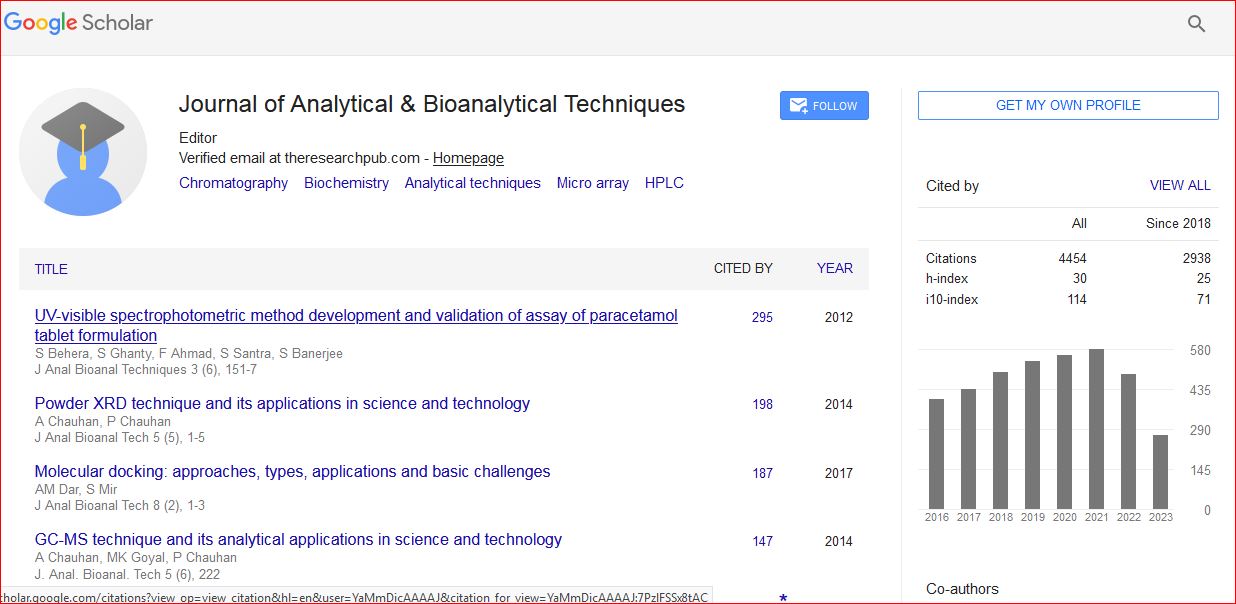Research Article
New Direct Competition Free but Not Label Free Immunosensor Method for IgG Determination
Elisabetta Martini, Mauro Tomassetti* and Luigi Campanella
Department of Chemistry, University of Rome “ Sapienza”, P.le Aldo Moro 5, 00185, Rome, Italy
- *Corresponding Author:
- Mauro Tomassetti
Department of Chemistry
University of Rome “Sapienza”
P.le Aldo Moro 5, 00185 Rome, Italy
Tel: +39 0649913722
Fax: +39 06490631
E-mail: mauro.tomassetti@uniroma1.it
Received date: March 14, 2013; Accepted date: April 03, 2013; Published date: April 05, 2013
Citation: Martini E, Tomassetti M, Campanella L (2013) New Direct Competition Free but Not Label Free Immunosensor Method for IgG Determination. J Anal Bioanal Techniques S7:008. doi: 10.4172/2155-9872.S7-008
Copyright: © 2013 Martini E, et al. This is an open-access article distributed under the terms of the Creative Commons Attribution License, which permits unrestricted use, distribution, and reproduction in any medium, provided the original author and source are credited.
Abstract
In the present study, to reduce the excessively long time required for each “competition” measurement performed using the customary competitive immunosensors, an innovative “direct”, i.e. competition free, immunosensor method for IgG determination, was developed. Unlike what is usually reported in the literature for the latter type of immunosensor devices, which are usually “label free”, that is, which do not use a marker since the signal is often obtained directly as a result of immunocomplex formation, in the present competition free method, an enzymatic marker was again used to perform robust electro-enzyme measurement, while the transducer used was of the classic gas diffusion potentiometric type. The new immunosensor affords a considerable reduction in analysis time, but maintains good repeatability and selectivity and so IgG analysis in human milk and serum was successfully performed using it. For the immunosensor developed, a systematic study was also performed to ensure its complete analytical characterisation using standard solutions of IgG and a comparison involving a classical “competitive” ELISA type immunosensor was also performed. Lastly a short excursus on label free immunosensor methods reported in the literature is included to justify the choice made in the present research.

 Spanish
Spanish  Chinese
Chinese  Russian
Russian  German
German  French
French  Japanese
Japanese  Portuguese
Portuguese  Hindi
Hindi 
